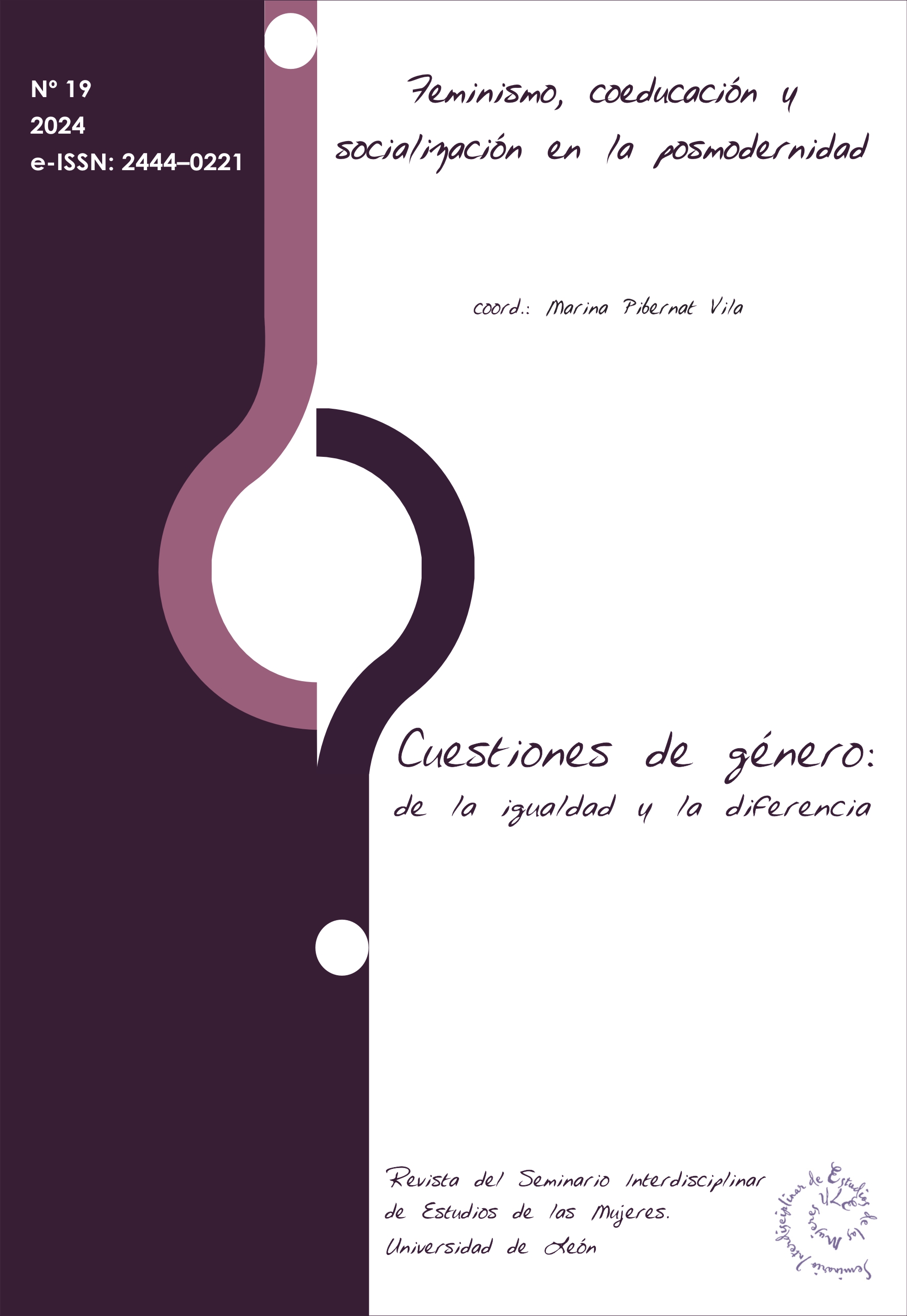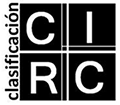Gender inequalities in education and their economic impact: a global quantitative analysis
DOI:
https://doi.org/10.18002/cg.i19.8280Keywords:
educational gender gap, gender, education, economic growthAbstract
Taking into consideration the influence that educational gender gap could have on the economic growth of countries, this research aims to study this impact, as well as the evolution in recent years and the current situation of gender inequalities in education. To achieve this, a quantitative analysis of these inequities is conducted, and an estimation, using the method of generalized least squares, of the impact of education on the GDP growth rate is performed. The results show that the gender gap in secondary education remains significant in low-income countries and indicate a negative impact on the economy due to barriers limiting women's access to the labor market.
Downloads
Métricas alternativas
References
Altuzarra-Artola, Amaya; Gálvez-Gálvez Catalina y González-Flores Ana M. (2021). “Is Gender Inequality a Barrier to Economic Growth? A Panel Data Analysis of Developing Countries”. En; Sustainability, 13(1), pp. 1-21. Disponible en: https://www.mdpi.com/2071-1050/13/1/367 [01/01/2024].
Banco Mundial (2024): “World Bank Country and Lending Groups”. Disponible en: https://datahelpdesk.worldbank.org/knowledgebase/articles/906519-world-bank-country-and-lending-groups [01/02/2024].
Barro, Robert J. (2014). “Inflation and Economic Growth”. En: Annals of Economics and Finance, 14(1), pp. 121-144.
Barro, Robert J. (2013). “Education and Economic Growth”. En: Annals of economics and finance, 14(2), pp. 301-328.
Barro, Robert J. (2003). “Determinants of Economic Growth in a Panel of Countries”. En: Annals of Economics and Finance, 4(2), pp. 231-274.
Barro, Robert J. (1996). “Democracy and growth”. En: Journal of Economic Growth, 1(1), pp. 1-27.
Barro, Robert J. (1991). “Economic growth in a cross section of countries”. En: Quarterly Journal of Economics, 106(2), pp. 407-443.
Barro, Robert J. y Lee, Jong W. (1994). “Sources of economic growth (with commentary)”. En: Carnegie-Rochester Conference Series on Public Policy, 40, pp. 1–57.
Blackden, Mark; Canagarajah, Sudharshan, Klasen, Stephan y Lawson, David (2006). “Gender and Growth in Sub-Saharan Africa: Issues and Evidence”. En: World Institute for Development Economics Research, Research Paper No. 2006/37.
Cuberes, David y Teignier, Marc (2017). “Macroeconomic costs of gender gaps in a model with entrepreneurship and household production”. En: The B.E. Journal of Macroeconomics, 18(1), pp. 1-22.
Cuberes, David, y Teignier, Marc (2014). “Gender inequality and economic growth: a critical review”. En: Journal of International Development, 26(2), pp. 260-276.
Cuberes, David y Teignier-Baqué, Marc (2012). “Gender Inequality and Economic Growth”. En: World development report 2012, gender equality and development, background paper.
Donou-Adonsou, Ficawoy (2019). “Technology, education, and economic growth in Sub-Saharan Africa”. En: Telecommunications Policy, 43(4), pp. 353-360.
Esteve-Volart, Berta. (2004). “Gender discrimination and growth: theory and evidence from India”. En: LSE STICERD Research, Paper No. DEDPS42.
Gujarati, Damodar N. y Porter, Dawn C. (2009). Basic Econometrics. Mcgraw-Hill.
Habibi, Fateh y Zabardast, Mohamad A. (2020). “Digitalization, education and economic growth: A comparative analysis of Middle East and OECD countries”. En: Technology in Society, 63, p.101370.
Hanushek, Eric A. (2016). “Will more higher education improve economic growth?”. En: Oxford Review of Economic Policy, 32(4), pp. 538–552.
Hanushek, Eric A. y Kimko, Dennis D. (2000). “Schooling, labor-force quality, and the growth of nations”. En: American Economic Review, 90 (5), pp. 1184–1208.
Hashim, Shumaila; Zehra, Nagmi y Rasheed, Uroosa (2021). “Relationship between Gender Inequalities and Economic Growth: A Case Study of Pakistan”. En: Jinnah Business & Economics Research Journal, 2(1), pp.33-45.
Hsieh, Chang-Tai; Hurst, Erik; Jones, Charles y Klenow, Peter J. (2019). “The allocation of talent and US economic growth”. En: Econometrica, 87(5), pp. 1439–1474.
Holmes, Craig (2013). “Has the Expansion of Higher Education Led to Greater Economic Growth?”. En: National Institute Economic Review, (224), pp. 29-47.
Juhásová, Simona; Buleca, Ján; Tóth,Peter y Mirdala, Rajmund (2023). "The Impact of Gender Inequality on GDP in EU Countries”. En: Central European Journal of Public Policy,17(2), pp. 13-32.
Knowles, Stephen. (2001). “Inequality and economic growth: The empirical relationship reconsidered in the light of comparable data”. En: The Journal of Development Studies, 41(1), pp. 135-159.
Krueger, Alan y Lindahl, Mikael (2001). “Education for growth: Why and for whom”. En: Journal of Economic Literature, 39 (4), pp. 1101–1136.
Ley Orgánica 2/2006, de 3 de mayo, de Educación. Boletín Oficial del Estado, 4 de mayo de 2006.
Ley Orgánica 3/2020, de 29 de diciembre, por la que se modifica la Ley Orgánica 2/2006, de 3 de mayo, de Educación. Boletín Oficial del Estado, 30 de diciembre de 2020.
OCDE - Organización para la Cooperación y el Desarrollo Económicos (2017). The Pursuit of Gender Equality: An Uphill Battle. París.
Ojha, Vijay P.; Ghosh, Joydeep y Pradhan, Basanta K. (2022). “The role of public expenditure on secondary and higher education for achieving inclusive growth in India”. En. Metroeconomica, 73(1), pp. 49–77.
Programa de las Naciones Unidas para el Desarrollo (2019). Informe sobre el Desarrollo Humano 2019. Nueva York: Programa de las Naciones Unidas para el Desarrollo.
Santos Silva, Manuel y Klasen, Stephan (2021). “Gender inequality as a barrier to economic growth: a review of the theoretical literature”. En: Rev Econ Household, 19, pp. 581–614.
Sen, Amartya (1982). Choice, Welfare and Measurement. Oxford: Blackwell.
Published
How to Cite
Issue
Section
License
Copyright (c) 2024 Sara Ouali Fernández

This work is licensed under a Creative Commons Attribution-NonCommercial-ShareAlike 4.0 International License.
L@s autores/as que publican en esta revista están de acuerdo con los siguientes términos:
1. L@s autores/as ceden de forma no exclusiva los derechos de explotación (reproducción, distribución, comunicación pública, transformación) a la Universidad de León, por lo que pueden establecer, por separado, acuerdos adicionales para la distribución no exclusiva de la versión de la obra publicada en la revista (por ejemplo, alojarlo en un repositorio institucional o publicarlo en un libro), con un reconocimiento de su publicación inicial en esta revista.
2. Este trabajo se encuentra bajo la Creative Commons Attribution-NonCommercial-ShareAlike 4.0 International License. Puede consultarse desde aquí la versión informativa y el texto legal de la licencia.
3. Se permite y se anima a l@s autores/as a difundir electrónicamente las versiones pre-print (versión antes de ser evaluada) y/o post-print (versión evaluada y aceptada para su publicación) de sus obras antes de su publicación, ya que favorece su circulación y difusión más temprana y con ello un posible aumento en su citación y alcance entre la comunidad académica.
Cuestiones de Género utiliza exclusivamente la licencia Atribución-NoComercial-CompartirIgual 4.0 Internacional (CC BY- NC-SA 4.0).
Bajo los siguientes términos:
- Atribución: Usted debe dar crédito de manera adecuada , brindar un enlace a la licencia, e indicar si se han realizado cambios . Puede hacerlo en cualquier forma razonable, pero no de forma tal que sugiera que usted o su uso tienen el apoyo de la licenciante.
- No Comercial: Usted no puede hacer uso del material con propósitos comerciales .
- Compartir Igual: Si remezcla, transforma o crea a partir del material, debe distribuir su contribución bajo la la misma licencia del original. cualquier uso permitido por la licencia.
No hay restricciones adicionales — No puede aplicar términos legales ni medidas tecnológicas que restrinjan legalmente a otras a hacer
L@s autores/as pueden consultar los derechos de copyright y las condiciones de autoarchivo en el directorio Dulcinea.










